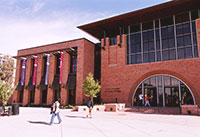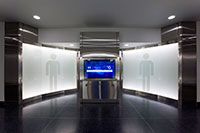view all Case Studies
University Monitors Life Safety Devices Automatically

The University of Utah — Salt Lake City has the goal of having at least one automated external defibrillator (AED) in each of the campus’ 300 buildings. Monitoring that many life safety devices, however, could have been a difficult task.
March 14, 2011 -
Fire Safety/Protection
The University of Utah — Salt Lake City has the goal of having at least one automated external defibrillator (AED) in each of the campus’ 300 buildings. Monitoring that many life safety devices, however, could have been a difficult task, except that the university already had a system in place for electronically monitoring the fire extinguishers in its 21 housing facilities for undergraduates. The FM team decided the same system could work for monitoring the AEDs.
The en-Gauge equipment monitoring technology can send information and alerts to any WiFi or cell-phone-based technology that a facility uses. The company’s system is wireless and can be used to monitor fire extinguishers, AEDs, medical oxygen, and first aid and hazardous materials kits.
Mike Halligan, associate director environmental health and safety at the University of Utah, says the benefits of electronic monitoring of safety devices are numerous, but points to two key benefits: First is immediate notification and response, and second is reduction in theft and vandalism. “We know immediately when an AED or extinguisher has been taken from its cabinet, allowing for even faster communication with emergency responders,” he says.
The second major benefit, Halligan says, is the fact that monitoring the devices acts as a deterrent to theft and vandalism, a common problem at most college and university campuses nationwide but not at the University of Utah — Salt Lake City. “Over the last year there have been no incidents of fire extinguisher tampering or vandalism in our student housing,” Halligan says. “We are absolutely positive that our en-Gauge fire extinguishers are where they should be, are operational and are unobstructed should they be needed in the event of an emergency.”
With confidence based on that track record, the university opted to use the en-Gauge sensor monitoring platform to keep track of 18 of its AEDs in large occupancy buildings on campus.
Next
Read next on FacilitiesNet












